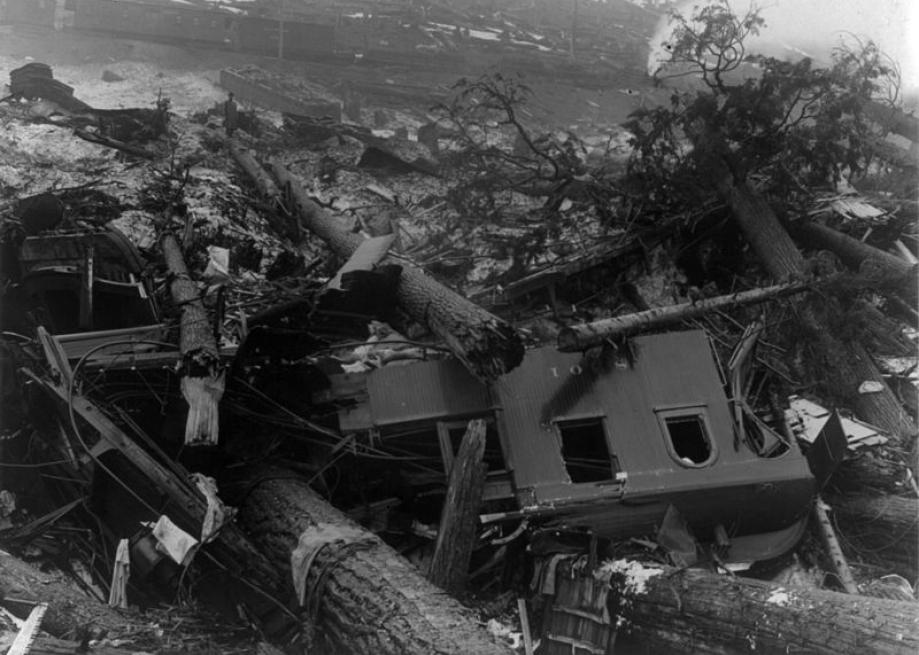The Twisted Remains of America’s Deadliest Avalanche
Atlas Obscura on Slate is a blog about the world’s hidden wonders. Like us on Facebook and Tumblr, or follow us on Twitter.
In the wilderness of Washington’s Tye River Valley, near Stevens Pass, are twisted pieces of rusting metal slowly being overtaken by the surrounding foliage. These bits of scrap are the final remnants of the Wellington Avalanche of 1910, the deadliest disaster of its kind in American history.
On Feb. 28, 1910, the small rail station in what was then called Wellington, Washington, was on lockdown after almost a fortnight of blizzard conditions. The area was buried in an impassable layer of snow. Despite the best efforts of the depot workers, two trains—one a passenger train called the Spokane Express, the other a mail carrier—were snowed in place for six days at the base of Windy Mountain. With telegraph lines downed by the storm, all communication to the small town and station had been cut off.
A number of passengers decided to escape the mountain on foot, but many more remained, waiting for the weather to give them a break that would sadly not come in time. As February turned to March, the heavy snows turned to a rainy, windy storm, giving some degree of hope to the passengers waiting to escape their mountainous purgatory. However, in the wee hours of March 1, 1910, lightning struck the mountainside and triggered a massive avalanche that sent a towering wave of snow thundering down toward the depot.
The cascade of "white death" obliterated the station and much of the small community of Wellington. The waiting train cars rolled over 150 feet down into the Tye River Valley, where the wreckage became buried in dozens of feet of snow. In the final accounting, 96 souls were lost in the disaster, including passengers and train workers, making it the deadliest avalanche in the country’s history. None of the people who walked off the mountain is reported to have perished.
After the tragedy, the community of Wellington was renamed Tye to distance it from the deaths, but even this name change could not save the small town, which eventually dissolved.
Today hikers on the Iron Goat Trail can still find bits of the warped wreckage that were not carried off the mountain, crumbling under the overgrowth as a reminder of nature’s terrible wrath.
More wonders to explore:
- “Stompie” the abandoned tank sitting on London’s Mandela Way was installed as a symbolic middle finger
- No one is exactly sure why more than a hundred lakes have formed amongst the tallest sand dunes on Earth
- The greatest amusement park in the world is wall-to-wall farting dogs, puking rats, and cows with exposed breasts for the whole family

